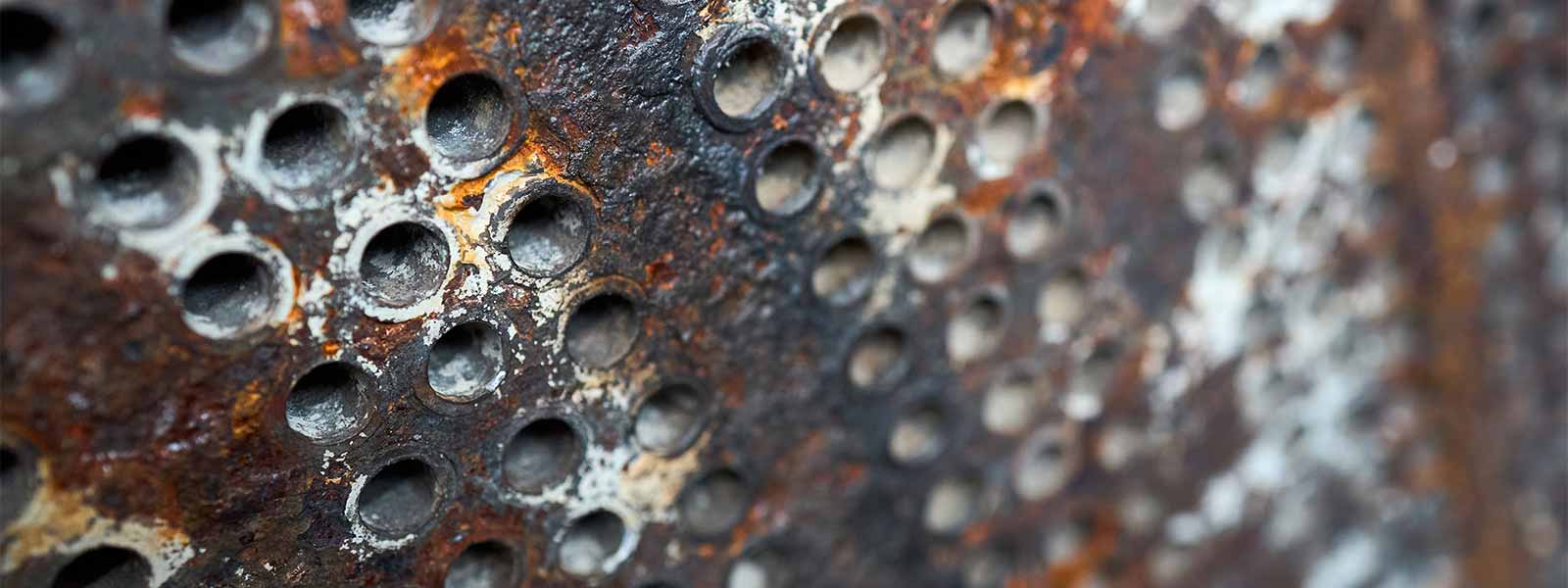
Corrosion Inhibitors
Along with biological fouling and fouling due to deposition, water treaters also face the problem of corrosion. Corrosion occurs when a metal experiences destruction by chemical(s) or by an electrochemical reaction with its environment. There are several different types of corrosion that can occur in cooling and heating systems; and the dynamics of these systems (metallurgy, raw water make-up, operating requirements, flow rates, etc.) all play a key role in how each system is treated. When the corrosion is uniform, fouling is the more prevalent problem versus equipment failure. When parts of a system experience localized corrosion, the problems are more severe and the corrosion leads to equipment failure, increased downtime, and substantial repair costs.
In cooling water systems, corrosion can occur in process cooling equipment, cooling water piping, and on heat exchanger surfaces. In boiler systems, corrosion can occur in multiple areas of the system such as, within the boiler itself, steam lines and the condensate return lines. Collectively, the more serious localized corrosion normally comes in the form of pitting, selective leaching, galvanic corrosion, crevice (under-deposit) corrosion, and Microbiologically Influenced Corrosion (MIC). No matter the form, metal loss due to corrosion cannot be tolerated; and a high-quality/highly-effective corrosion inhibitor must be a part of any proper water treatment program. The correct implementation of a corrosion inhibitor ensures that the systems you manage will run at optimum efficiency – resulting in lower energy costs, lower water disposal costs, reduced downtime and equipment replacement costs, and provides the added assurance that your clients operate within their environmental regulatory guidelines.
Bio-Source offers the following all-purpose Mild-Steel Corrosion Inhibitors for industrial cooling water and boiler applications.
Additional Corrosion Inhibitors for Boiler Water Applications will be listed on the “Corrosion Inhibitors – Boiler Systems” page.
The following chemistries are precipitating (cathodic) inhibitors that work to form a protective film on heat exchanger surfaces without sacrificing the critical efficiency that these systems require.
Hydroxyphosphono-acetic Acid (HPA)
Also known as Phosphonocarboxylate, this product is a phosphorus based all-organic corrosion inhibitor for mild steel in cooling and retort water, and in boilers and steamlines. It is stable in well-controlled halogenated cooling systems, and it will slowly degrade to orthophosphate in the presence of high levels of oxidizing agents such as chlorine.
Halogen Stable Hydroxyphosphono-acetic Acid (HPA – Halogen Stable)
This product is an all-organic high-performance corrosion inhibitor for use in moderate to highly corrosive conditions in industrial water systems. Its activity is not affected by the presence of high levels of chloride or sulfate ions, and it also functions as a scale inhibitor in low to moderate hardness waters. It’s mode of action is the formation of a uniform film over the metal’s surface. An added benefit to this particular chemistry is that it has a reduced environmental impact due to its biodegradability and low phosphorus (P) content.



